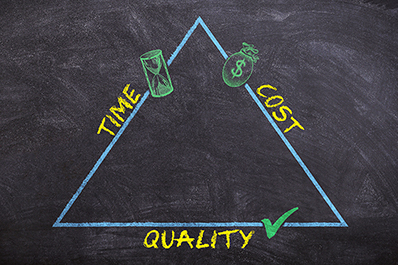
In order to determine whether production decoupling is right for your business, it is important to understand your campaign requirements – are they local or global, multi-channel, digital, etc. – as well as what brands are in your company’s portfolio?
1. Requires senior marketing stakeholder support throughout
Implementing production decoupling practices can be a big change for stakeholders. This approach will dismantle many of the working conditions between markets, agencies, suppliers and so on. However, introducing production decoupling models can also create new collaborations between stakeholders. It is, therefore, important to involve decision-making processes at the highest levels and focus on staying the course in terms of planning and strategy.
2. Is based on a defined and sustainable financial model
Decoupling focuses on improving production processes and economies of scale. Companies that have attempted to undertake production decoupling models simply to reduce costs have, oftentimes, flopped because they didn’t take advantage of the value created in streamlining production work. Decoupling is not as simple as utilising the cheapest supplier. It involves selecting and managing resources efficiently in order to get the highest value at the cheapest cost.
3. Has clearly defined objectives, strategy and metrics
If a company decides to decouple only to reduce costs, they should consider a different option. The value rests in other benefits, such as effective brand management, brand consistency in supplier deliverables, increased speed to market and more.
”It is, therefore, important to involve decision-making processes at the highest levels and focus on staying the course in terms of planning and strategy.”
4. Includes input from the agencies on supplier selection
Agency creatives and production frequently have established relationships. For example, it is important for creative staff to have the freedom to make decisions about the directors they would like to work with. And in turn, directors and producers work on solidifying partnerships with creative directors. It is important to understand the nature of these collaborations and respect them.
5. Marketing strategy requirements are clearly understood and accommodated
Marketing strategy requirements are changing with the drive of technology. The move from broadcast to inbound content marketing opportunities requires a different process to market. Therefore these requirements must not only be identified but quantified to determine their significance in the mix. Understanding not only the current requirements, but the potential future changes in these strategic requirements will allow you to develop a new model that is sustainable in the medium to longer term.
6. Evaluation criteria is clearly weighted to suit marketing requirements
As discussed, choosing suppliers should not be left to who is the least expensive, but rather which production house can best deliver the highest quality according to the campaign’s needs. The old adage rings true, “you get what you pay for”. The cheapest supplier will, most likely, deliver the lowest quality work.
7. Is communicated with all stakeholders at each step of the process
Many stakeholders are involved when choosing production processes and each should be aware of every step taken. For many reasons, companies may forget to involve marketing teams and agencies when they are implementing production decoupling methods and identifying suppliers, but relationships with said teams and agencies must take the highest priority.
8. Final supplier selection is based on delivering all of the objectives
The number of production houses utilised in decoupling models is uniquely based on campaign requirements. This means that marketers should choose as many as possible to deliver the highest quality, effective and successful. As well, they should choose the fewest possible that can deliver the maximum value.
9. On appointment, all stakeholders understand their roles and responsibilities
Again, implementing production decoupling models will invoke a change in the company’s culture. To minimise the degree of disruption, all participants must clearly understand their new roles and responsibilities. This includes marketing teams, agencies and suppliers as well.
10. Regular reviews are undertaken, both on each production and annually
Implementing a production decoupling model is an ongoing process. Depending on the volume of production, reviews (at each quarter or bi-annually) should be common practice. Companies should oversee production executions in order to make sure that operations are working efficiently and effectively. If there is a need for changes, they must be implemented.



